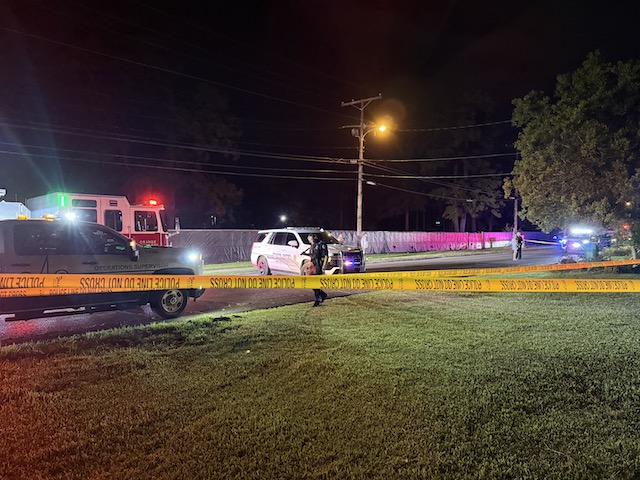CERTIFIED TEXAS EXPERT GARDNER — Saving honeybees are important for a community perspective
Published 12:06 am Wednesday, June 12, 2024

- Each of the beehive boxes represents millions of visits to flowers; this is the number of flowers needed to produce a single pound of honey with another 6 to 8 million flowers to produce a pound of wax to build the comb. (Scientificbeekeeping.com)
|
Getting your Trinity Audio player ready...
|
Gardeners it should be no surprise that honeybee (Apis Mellifera) colonies have been declining for many years (decades) affected by vectors, such ectoparasitic mite (Varroa destructor).
The mites transfer the virus to the host by piercing the host (bee) body tissue which transfers the vector to the bee.
Honeybees face other viral threats which cause disease: Acute bee paralysis virus (ABPV), Black queen cell virus (BQCV), Chronic bee paralysis virus (CBPV), Deformed wing virus (DWV), and others including the Israel acute paralysis virus (IAPV) and Kasmir bee virus (KBV).
Each of these vectors is severely affecting world honeybee populations and honey production.
Unfortunately, there are other serious threats such as Colony Collapse Disorder (CCD), which occurs when too many of the “worker” bees depart, leaving the colony with immature bees and the queen to be cared for by a few nurse bees.
Entomologists believe there are multiple causes for CCD that can lead to colony loss.
Compounding the detrimental effects to honeybee colonies are extreme weather patterns-blistering summer and frigid winter seasons.
Intensifying the environmental stressors already placed on colonies, even more environmental stress- extreme drought throughout the state!
How often do we read or listen to local, national, or global new organizations which provide us with a grim overview about honeybees and other pollinator populations.
There is good reason for us all to heed scientists’ warnings of declining pollinator populations. At this point you may be asking why are honeybees and other pollinators important?
Many beekeepers would argue that the honeybee is the ultimate pollinator (beekeepers may be slightly biased but I agree with them).
Have you ever noticed a beehive (boxes) placed in a field while driving?
Each beehive box represents millions of visits to flowers by honeybees, in fact it takes a million flower visits to produce a single pound of honey with another 6 to 8 million flower visits to produce a pound of wax, needed to build the honeycomb.
Let me put this into perspective as each hive (colony) placed into a field contains around 40,000 bees, holding approximately 20 pounds of wax, and 100 pounds of honey.
By the numbers, this represents roughly 240 million flower visits are required for each hive per year. This vast number of visits per hive yearly is absolutely astonishing-that’s a lot of flowers & flights!
Fun Fact: California almond growers pay beekeepers to move 2.2 million beehives (~8.8 billion honeybees) annually. Approximately 80 percent of all “managed” honeybee colonies in the US are relocated to California every winter. Billions of these ‘managed’ pollinators are necessary to “effectively” pollinate almond groves to provide us almonds we purchase at our local markets.
Without managed pollinators many of our crops will fail!
There are many crops’ farmers grow which require the meanderings of honeybees, such as every type of melon and squash, blueberries and apples to name a few.
Approximately 1/3 of the produce grown in the Untied States has direct links honeybee pollination and another 1/3 of food (animal protein) are indirectly linked, such as beef which requires bees to pollinate grasses like alfalfa which is used as feed stock.
Honeybees do more than pollinate our crops, they provide us with honey and other hive products which are antibacterial, antifungal, antimicrobial. Big Pharma utilizes honey to manufacture medications, hospitals use honey-impregnated gauze for wound care, people use honey for allergy relief, bees’ venomous stings aid in relieving arthritis pain, and there are many other home remedies which use honey.
Can gardeners help save honeybees?
Short answer is absolutely!
This is how anyone can help since bees will travel a 3-mile radius from the hive searching for nectar and pollen. Plant wildflowers around the property.
Apply weed and feed to the areas where wildflowers are planted and always avoid using systemic insecticides as the active ingredients concentrate in plants’ nectar and pollen, known to kill visiting pollinators.
Avoid using powered insecticides since they tend to “cling” to bees, which is then carried to the hive and fed to young bee larva. If you must … spray insecticides on plants, choose wisely, read the label before use to understand the detrimental effects of use, and spray at dusk or later, to allow honeybees a safe return to the hive, allowing them to remain out of harm’s way.
Finally, and most importantly — support a local beekeeper!!! Purchase honey directly from beekeeper (simply ask as I’m glad to share my source for exceptional honey).
Don’t be ‘tricked’ by the label applied to honey at grocery stores, which claim to be “Local” or “Texas,” often the honey on the shelf “ain’t from around here y’all!!”
So long for now fellow gardeners, let’s go out and grow ourselves a greener, more ‘pollinator (honeybee) friendly’ world, one plant at a time!
Send Certified Texas Expert Gardener John Green your questions and please continue sending comments to jongreene57@gmail.com.





